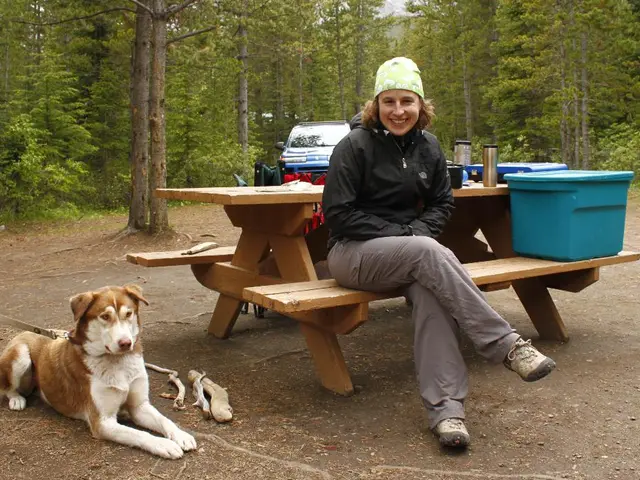Time-Saving Garden Tips for the Time-Constrained
In the world of gardening, there's always room for innovation and efficiency. Here are some practical hacks that can make tasks easier, save time, and keep your plants thriving.
Firstly, controlling the spread of invasive species is crucial for maintaining biodiversity in your garden. A simple yet effective method is to drive a plastic or metal barrier around plants like mint or bamboo, preventing the invasive root systems from spreading. This not only helps in maintaining better control over your garden layout but also ensures a healthier ecosystem.
Watering plants, especially during hot summer days, can be a challenge, particularly for water-intensive crops like tomatoes. Using a plastic bottle with small holes for slow-release irrigation ensures deep, consistent watering, keeping your plants well-hydrated without wasting water.
Young trees need all the help they can get to thrive. Planting them in a square hole instead of a round one prevents the roots from circling, improving stability and access to nutrients. Marking common seed-planting depths on a wooden chopstick or dowel ensures uniform planting depths for optimal results.
Keeping soil moist, reducing weeds, and regulating soil temperature are essential for a thriving garden. Using a thick layer of mulch like shredded leaves, straw, or wood chips is a natural and effective way to suppress weeds. This technique not only saves time on weeding but also reduces the frequency of watering.
Organizing plant tags in a small photo album or zip-top bag alongside notes about care instructions, bloom times, and planting locations helps maintain track of plant care requirements over time. This simple system ensures that you provide the best possible care for your plants.
When it comes to weed control, there are some creative solutions. A DIY weed killer can be made by mixing white vinegar and dish soap to create a natural weed-killing spray, avoiding the expense and chemicals of store-bought herbicides. Using a cut-open can or bucket as a collar around weeds prevents herbicide overspray onto desirable plants or grass. Laying down layers of newspaper around plants to suppress weeds while still allowing moisture to reach roots is known as the "newspaper lasagna" technique and reduces weeding needs.
Using common materials creatively is key to these hacks. Repurposing household items like colorful wooden clothespins as plant markers, old carpet as kneeling pads, or oversized kitchen spoons as small trowels not only saves money but also adds convenience.
Watering directly at the root zone is another effective method, particularly for deep-rooted plants like tomatoes or squash. Burying perforated PVC pipes upright near these plants can help in watering directly at the root zone, reducing mildew and conserving water.
A thick blanket of mulch around plants can lock in soil moisture, suppress weeds, and reduce the frequency of watering and weeding tasks. This simple strategy makes gardening more manageable and rewarding.
Starting small and growing what you love is a great approach for beginners. Focusing on a few favourite plants suited to your space and taste makes gardening more manageable and rewarding. For limited space, growing herbs or tomatoes in containers or joining a community garden can help maximize your growing area.
These hacks not only streamline gardening by cutting down on labor-intensive tasks like weeding and watering but also make gardening accessible to beginners and keep plants healthy with simple, resourceful strategies. The emphasis is on using common materials creatively and working with natural cycles and simple plant needs.
Bonnie Ferrero, the author of these hacks, embodies a holistic approach to life, dedicated to service, growth, and well-being. Her interests in hiking, cooking, gardening, and home decorating reflect her commitment to a sustainable and fulfilling lifestyle.
[1] Ferrero, B. (2022). Gardening Hacks: 50 Simple Solutions for a Beautiful Garden. [Book] [2] Ferrero, B. (2021). The Efficient Gardener: 30 Time-Saving Strategies for a Thriving Garden. [Book] [3] Ferrero, B. (2020). The Natural Gardener: 25 Eco-Friendly Techniques for a Healthy Garden. [Book] [4] Ferrero, B. (2019). The Small Space Gardener: 30 Plants to Grow in Limited Spaces. [Book]
- In the book 'The Small Space Gardener' by Bonnie Ferrero, she suggests growing herbs or tomatoes in containers for those with limited space.
- A simple hack for maintaining a thriving garden is to use a thick layer of mulch like shredded leaves, straw, or wood chips to suppress weeds and regulate soil temperature.
- To ensure proper planting depths and make gardening more manageable, Ferrero recommends marking common seed-planting depths on a wooden chopstick or dowel.
- For water-intensive plants like tomatoes, a plastic bottle with small holes can be used for slow-release irrigation, providing deep and consistent watering.
- Bonnie Ferrero suggests a creative weed control solution: mixing white vinegar and dish soap to create a natural weed-killing spray.
- To save money and make gardening more convenient, repurpose household items like wooden clothespins as plant markers, old carpet as kneeling pads, or oversized kitchen spoons as small trowels.
- To make tasks easier in the garden and keep invasive species under control, Ferrero suggests driving a plastic or metal barrier around plants like mint or bamboo.




